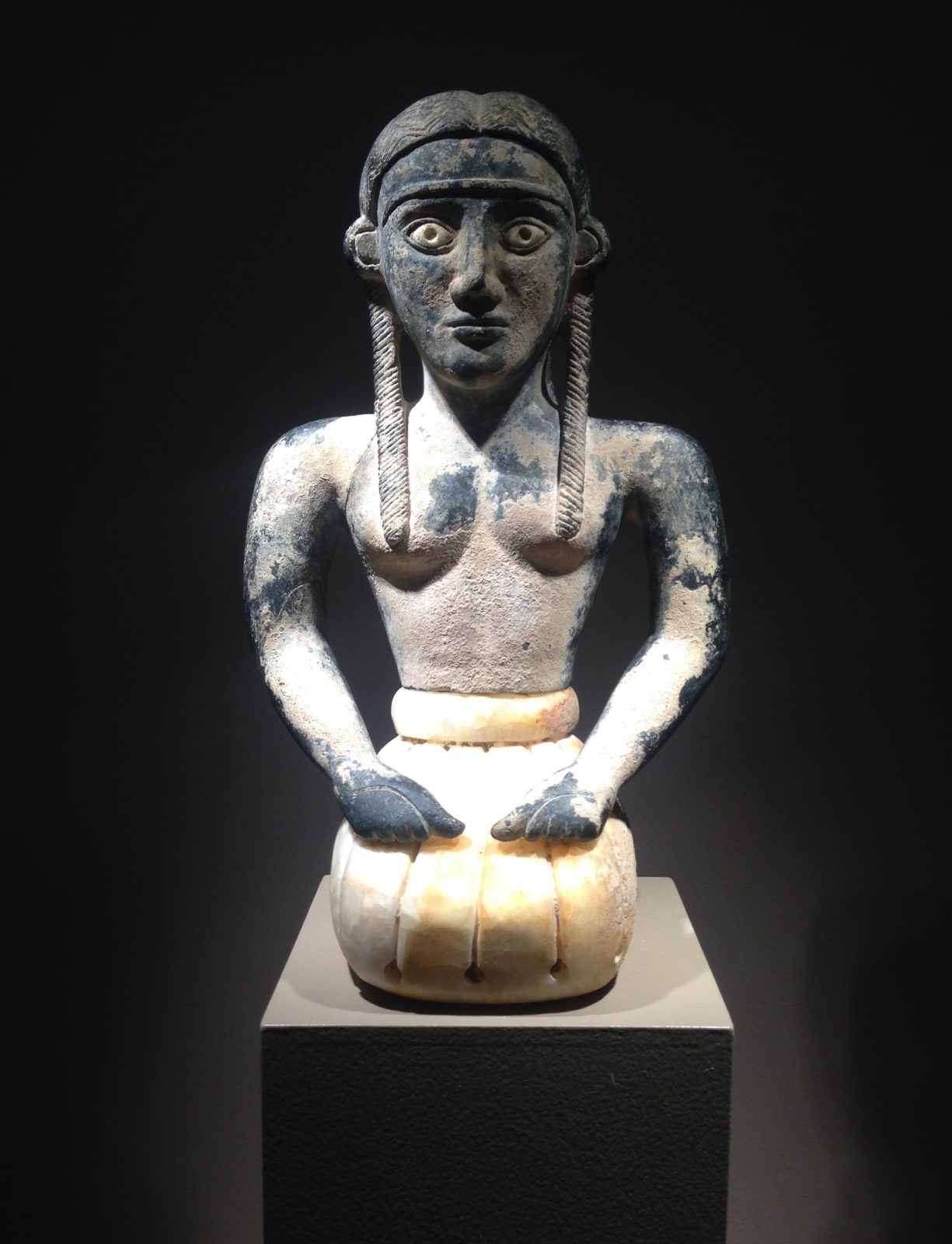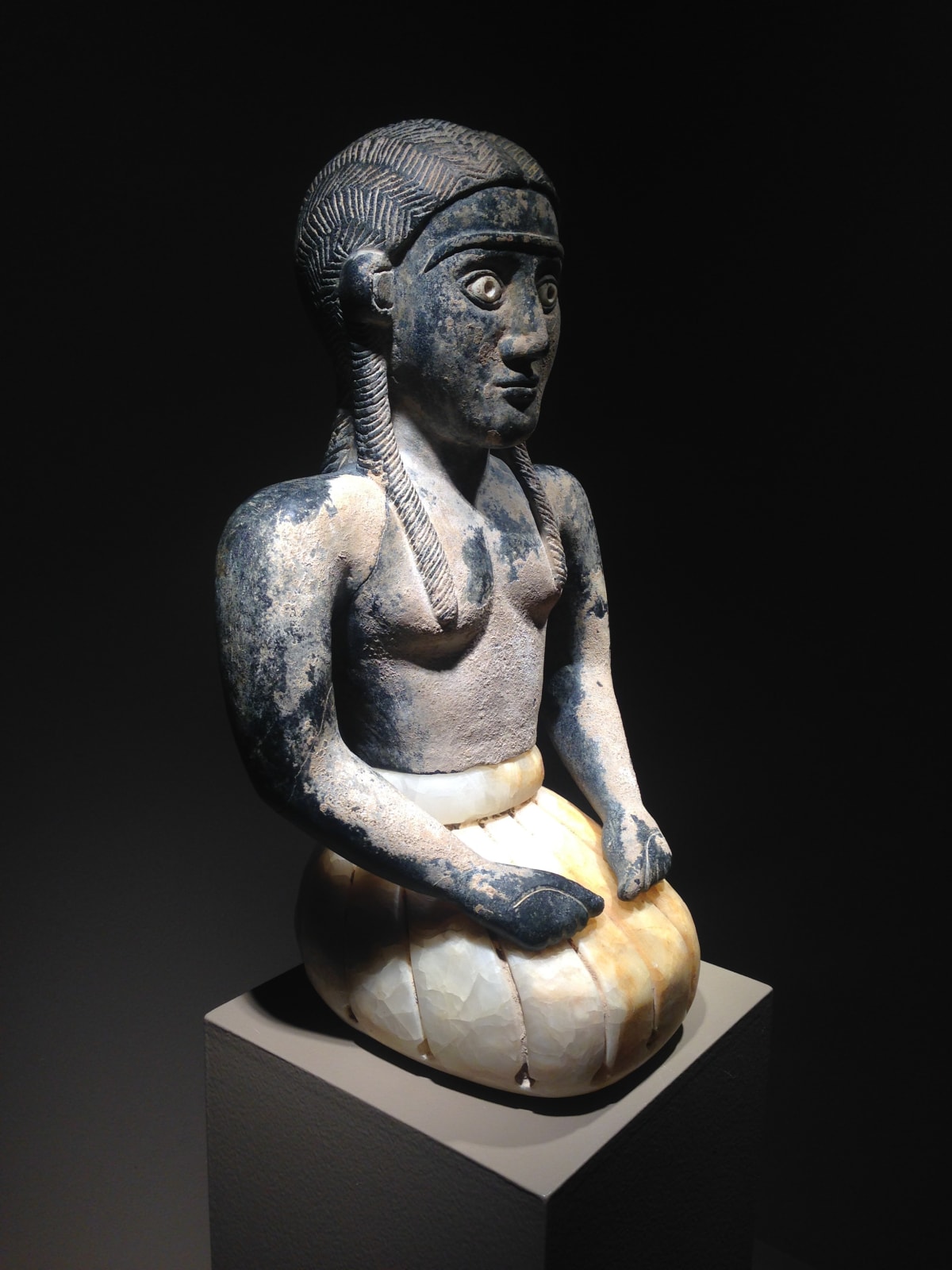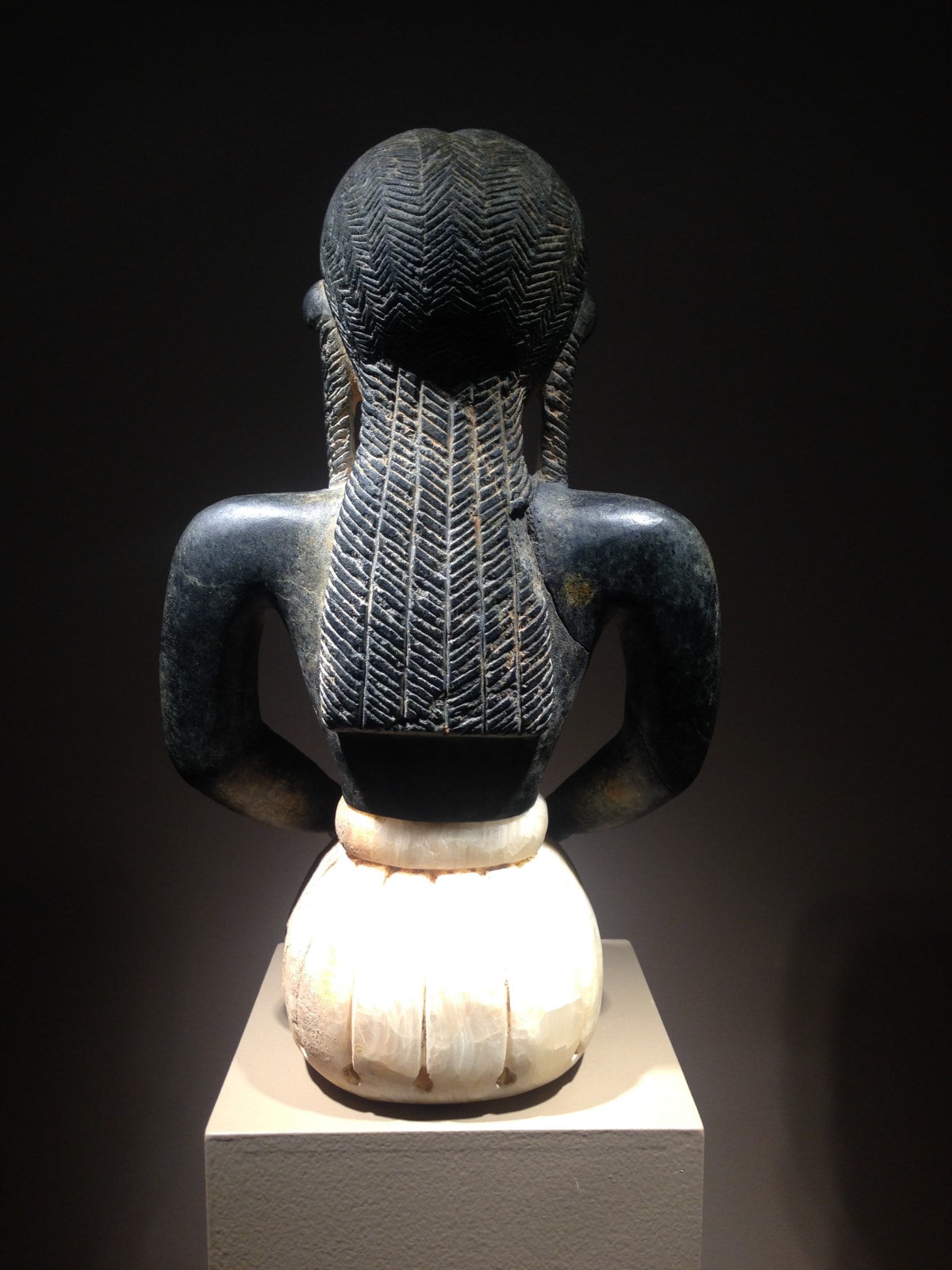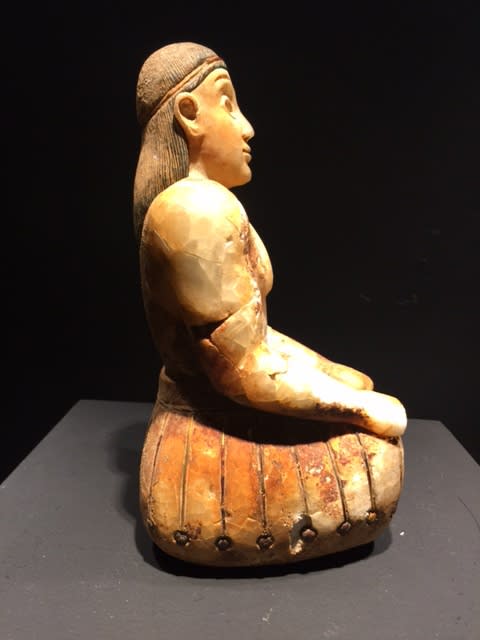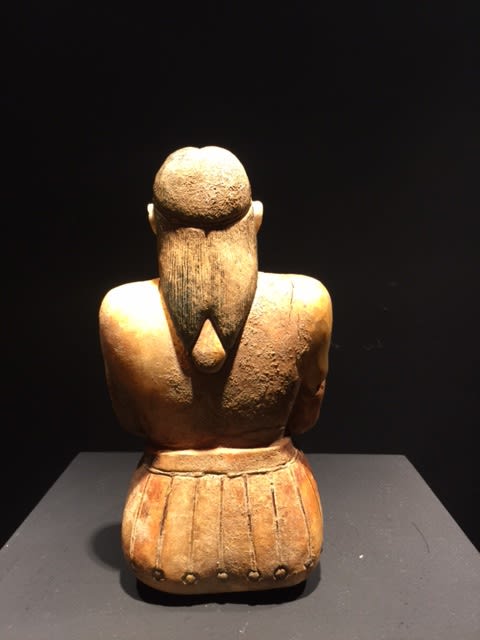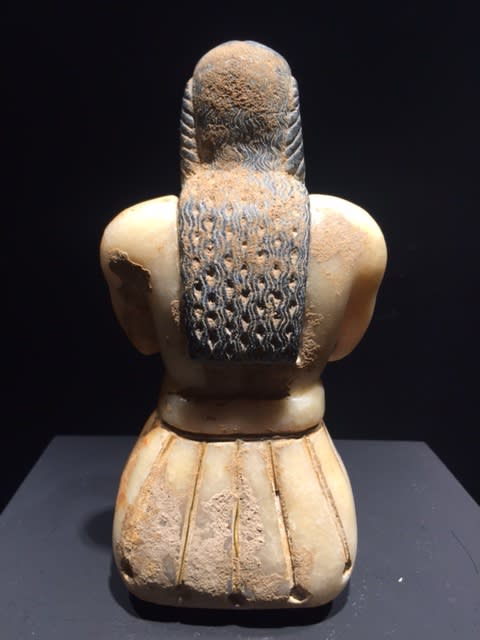i) Seated Male Figure, Eastern Iran, Oxus Culture 2200-1800BC, chlorite, limestone, H.33 cm. Inv. 2086
ii) Kneeling Male Figure,
Eastern Iran, Oxus Culture 2200-1800BC, gypsum alabaster, chlorite, with gold inlay, h. 20 cm. Inv. 2496.1
iii) Kneeling Male Figure Holding a Vessel, Eastern Iran, Oxus Culture 2200-1800BC, gypsum alabaster, chlorite, with gold inlay, H.20 cm. Inv. 2496.2
These three youthful figures are all shown kneeling with their legs folded under their skirts, a posture frequently depicted in the banquet feast scenes engraved on metal vessels and seals surviving from the Oxus, such as those on inv. 2875 in the Wyvern Collection shown below.
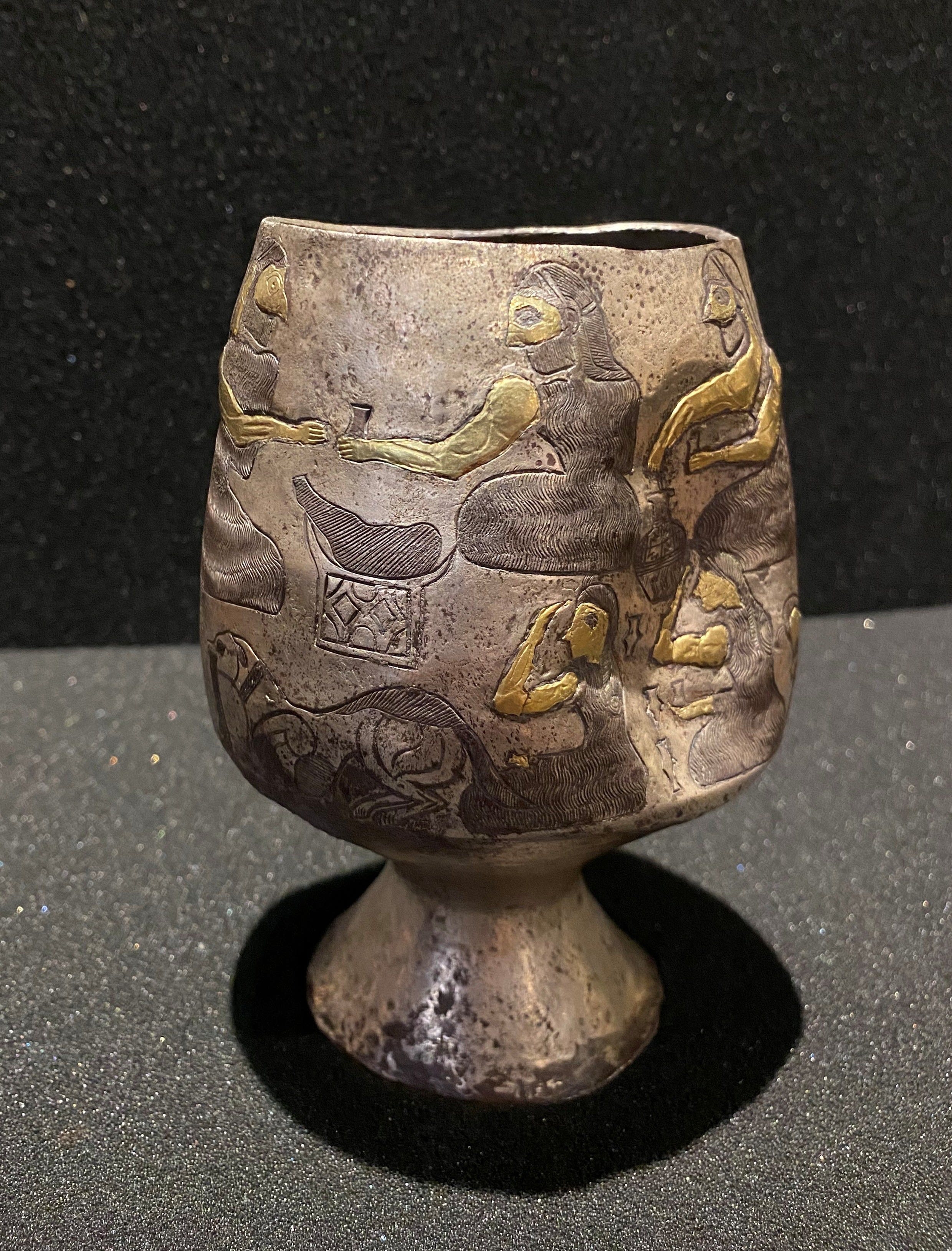
Silver gilt cup with banqueting and music making scenes, Bactria, 3rd millennium BC, Wyvern inv. 2875
Made with a composite technique incorporating differing combinations of dark chlorite and light coloured alabaster or limestone the figures share several details with the famous 'Scarface' figures of the same period, such as Wyvern Collection inv. 2150 (see below). Around a dozen 'Scarface' figures are known and are named as such due to the deep gash that cuts across their faces (see Caubet 2018, pp.248-249). Similarities can be drawn between the dark body of inv. 2086, the muscular torsos and kilts with inlaid stripes of all three figures, and the thin diadem of inv. 2496.1, with those of the 'Scarface' figure (Caubet 2018, pp.250)
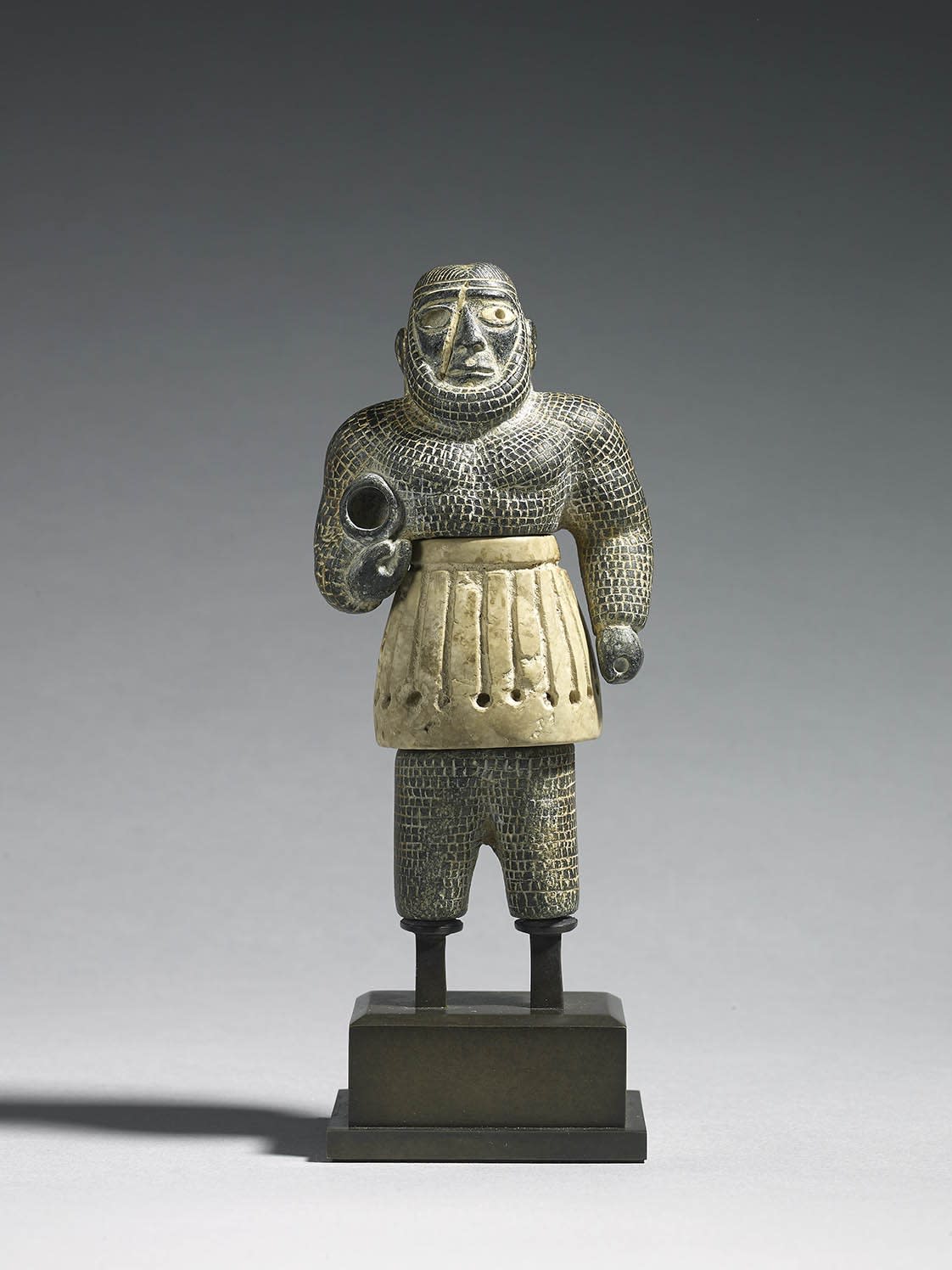
'Scarface' Figure, Eastern Iran, Oxus Culture 2200-1800BC, chlorite, limestone, h. 11.5 cm. Wyvern inv. 2150.
However, unlike the ‘Scarface’ figures, these kneeling youths are clean shaven with elaborate long hair styles and portray a peaceful demeanour. The subtle difference in styles and materials of the three figures may indicate different roles or status of the individuals they depict (Caubet 2018, pp.250). In inv. 2496.2 the figure holds an offering pot and is more submissive in style that the other two. Is this a lower status individual? It is tempting to compare this offering vessel to the pot that is tucked under the arm of ‘Scarface’ (inv. 2150). Does the vessel allude to different moments in a sub ritual? As Annie Caubet has suggested perhaps these are both episodes from a narrative now fragmented through partial survivals. (Caubet 2018, pp.250)
Published:
Caubet, Annie. [ed.], Idols: The Power of Images, (Skira; Fondazione Ligabue: Milan; Venice, 2018). pp. 248-253, cat. entries: 94-97.
Exhibited:
Venice, Palazzo Loredan, with the Fondazione Ligabue ‘Idols: the Power of Images’ September 2018-January 2019.
